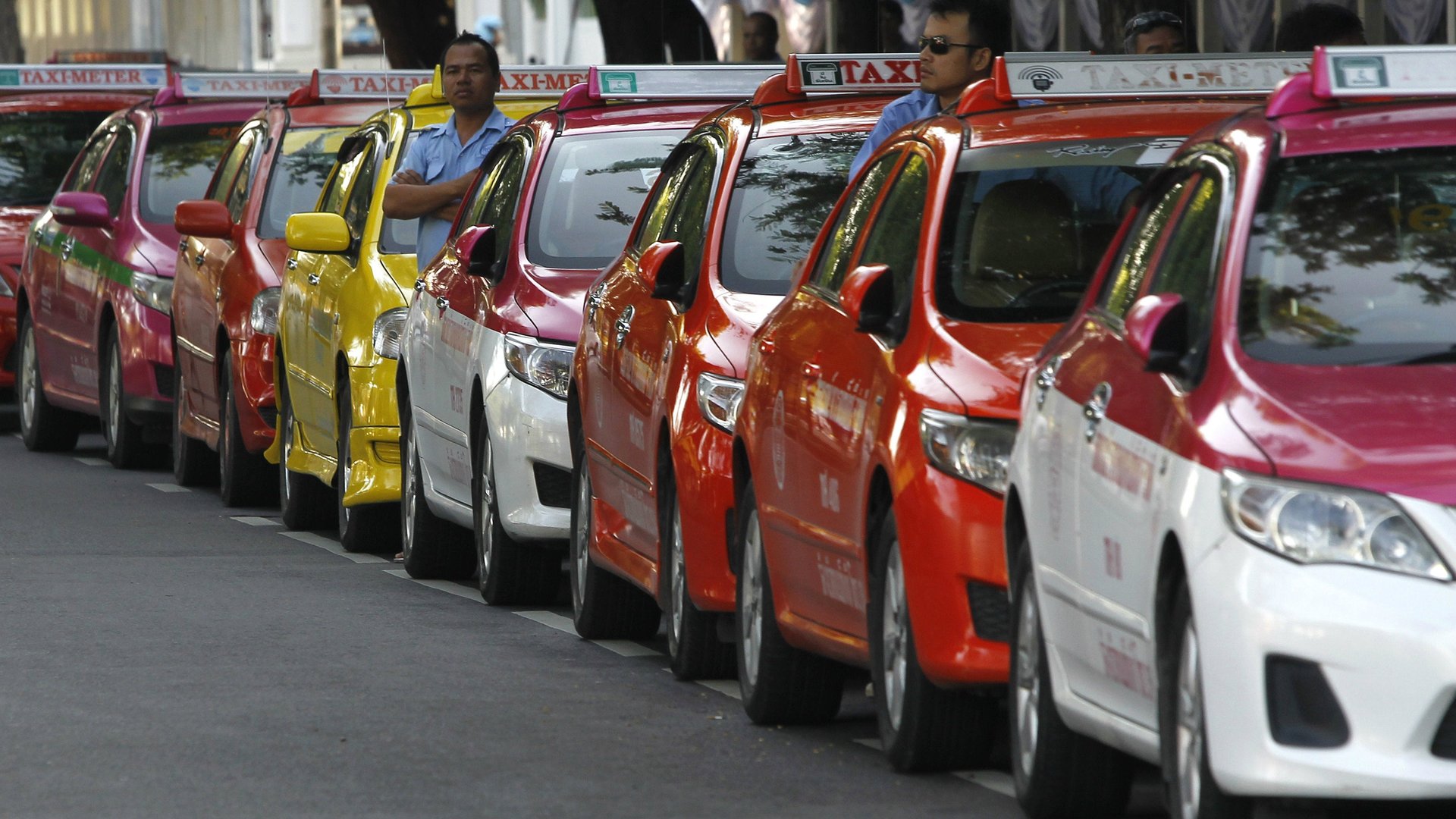After years of battling against city taxis, Uber is embracing them in Asia
Uber’s public enemy No. 1 was once the global taxi industry. “We’re in a political campaign, and the candidate is Uber and the opponent is an asshole named taxi,” former Uber CEO Travis Kalanick once said at a tech conference in 2014.


Uber’s public enemy No. 1 was once the global taxi industry. “We’re in a political campaign, and the candidate is Uber and the opponent is an asshole named taxi,” former Uber CEO Travis Kalanick once said at a tech conference in 2014.
Three years later, Kalanick is out, and in Asia, the company’s tone has changed.
On Wednesday (Dec. 13) Uber, announced a partnership with Howa Taxi, an operator of taxi fleets across Bangkok, to add its more than 5,000 cabs to Uber’s existing fleet of vehicles. Starting next week, users in the city can now hail a Howa cab using the UberTaxi option on the app, and can pay for the ride online.
The partnership is one of several similar ones in Asia, which together highlight a strategic shift Uber is making across the continent as it faces tough regulations and stiff competition.
In the US, Uber has worked with taxi fleets only rarely. When it has, it’s typically been a stopgap measure to build brand awareness before rolling out a peer-to-peer service, in which people use their own or rented cars to ferry passengers, with the app acting as a middleman to connect the two. Taxi drivers in the US and other countries have staged protests against Uber, arguing that it steals business away from them by operating a de-facto taxi service without the required licensing that they must go through.
But in Asia, Uber has been relying on regular taxis more and more to add customers.
Late last week, in Singapore, Uber inked a deal with local taxi company ComfortDelGro to add the latter company’s 15,000 In addition, ComfortDelGro purchased a 51% stake in Lion City Rentals, a local Uber subsidiary established to purchase and rent out cars to Singapore drivers (and which ran into trouble earlier this year over safety issues).
In late October, in Taiwan, Uber partnered with three taxi companies to offer UberTaxi in Taipei. The companies joined forces after Uber lost its right to operate its peer-to-peer UberX service on the island. In Seoul and Tokyo, meanwhile, Uber has long partnered with licensed taxis, as bans against peer-to-peer ride-hailing have handicapped its growth in both cities.
Uber’s embrace of taxis in Asia reflects both local market conditions as well as the company’s stiff regional competition.
Uber’s chief competitor in Southeast Asia, Grab, grew popular by working exclusively with taxis before offering peer-to-peer rides. Partnering with taxis could help Uber increase its vehicle supply in Asia to match Grab’s, particularly in cities where private car ownership rates are low. In Singapore, for example, the government imposes heavy fees and caps on new car registrations, making vehicle ownership prohibitively expensive for many consumers. Those who can afford cars are unlikely to gig as drivers for extra cash.
But it’s not clear if working with taxis in Asia will do much to help Uber’s bottom line. The company has reportedly logged net losses of over $1 billion over the past two quarters, while its gross bookings grew from $8.74 billion to $9.71 billion over that period.
For its peer-to-peer rides, the company collects about 20% of the fare, depending on the market, while the rest goes to the driver. For rides hailed via taxis, it’s possible Uber will collect less of the fare. A company spokesperson declined to comment on the details of the revenue-sharing arrangements it has worked out with taxi companies.
Neither Uber nor Grab will disclose how many vehicles or completed rides they have in the cities they operate in. Yet Grab’s recent $700 million debt financing round, coupled with new CEO Dara Khosrowshahi’s dour comments on the region, suggest the companies are stuck at a stalemate.
“The economics of that market are not what we want them to be,” Khosrowshahi said of Southeast Asia at a conference in November. “I think it’s over-capitalized at this point. We’re going in, and we’re leaning forward. But I’m not optimistic that market is going to be profitable any time soon.”